If you attend raves or drug parties, you may have spiraled into a world that you never intended to be a part of. A world where consuming club drugs is a typical Friday night activity. If that sounds like you, a reputable drug rehab in Utah or Idaho is your ticket back to a life of freedom, unshackled from the addiction that has overruled your mind and body.
What Are Club Drugs?
Club drugs are chemical substances that stimulate the senses and heighten the experience of a rave, party, or similar gathering. Even though people usually take their first club drug in the name of fun, the consequences are far from fun. These intense, hard drugs are very dangerous and addictive.
The Dangers of Club Drugs
Club drugs intensely alter situational awareness, mood, and behavior. Those most likely to consume club drugs are teenagers and young adults. Club drugs are unpredictable. How they affect one person may be completely different than how they affect another.
Club drugs, often associated with nightlife and party scenes, are typically synthetic substances that are both cheap and easily accessible. While the term “club drug” can technically refer to any substance used in such environments, it is most commonly associated with a specific group of drugs. These substances, often created in illicit labs, carry significant health risks, particularly when combined with alcohol or other substances.
The environment in which people at clubs consume club drugs—with loud music, crowded spaces, and social pressure—increases the danger. Mixing alcohol with these drugs can amplify the risk of dehydration, overdose, and other serious health complications. An even scarier aspect of club drugs is that dealers often lace them with additional unknown or harmful chemicals, such as fentanyl.
In addition to physical dangers, club drugs can also pose a severe threat to personal safety. Club drugs like Rohypnol and gamma-hydroxybutyric acid (GHB), known as “date-rape drugs,” frequently show up in sexual assault cases. Victims are unaware that they’ve ingested these drugs, which are commonly slipped into drinks without their knowledge. In some instances, individuals may take a club drug, believing it to be something else entirely, only to fall prey to exploitation.
Beyond the immediate risks, consuming club drugs can lead to long-term consequences such as psychological dependence, toxic reactions, severe dehydration, and even fatal overdoses.
The Most Well-Known Club Drugs
- Ecstasy (MDMA): Known on the street as X, E, M&M, XTC, bean, clarity, Adam, or essence, ecstasy is a hallucinogenic stimulant derived from methamphetamine, known for enhancing sensory perception and creating feelings of euphoria.
- Methamphetamine: Often referred to as crystal meth, crank, meth, ice, crystal, speed, or Tina, this potent stimulant derivative of amphetamine can increase energy and focus but carries high risks of addiction and severe health consequences.
- LSD: Street names for this potent hallucinogen include acid and mellow yellow. LSD has long-lasting psychoactive effects that distort perceptions and alter sensations, often leading to intense visual and auditory experiences.
- Shrooms (Psilocybin mushrooms): These naturally occurring mushrooms, also called magic mushrooms, contain psilocybin, a powerful psychoactive compound that induces hallucinations and altered states of consciousness.
- Ketamine: Commonly known as special K, K, Fort Dodge, and vitamin K, ketamine is a dissociative anesthetic used recreationally to produce hallucinations and a numbing sensation in the body, especially in the limbs.
- Phencyclidine (PCP): Street names include angel dust, elephant tranquilizer, The sheets, Love Boat, crystal, and hog. PCP is notorious for creating dissociative, out-of-body experiences and can cause violent behavior and severe psychological distress.
Common Date-Rape Club Drugs:
- Rohypnol (Roofies): Often used in sexual assaults, these sedative-hypnotic drugs can incapacitate victims without their knowledge.
- Gamma-Hydroxybutyric acid (GHB): Sometimes called liquid ecstasy, grievous bodily harm, liquid X, or Georgia homeboy, GHB is a depressant that can cause amnesia and loss of consciousness, often used in sexual assault cases.
- Xanax: A prescription drug with sedative effects, Xanax is sometimes abused recreationally for its calming effects.
- Ketamine: In addition to its recreational use as a hallucinogen, ketamine has also been implicated in date-rape drug cases due to its disorienting and dissociative properties.
Effects of the Above Club Drugs
Each drug is unique in how it affects the mind and body. However, all have similar characteristics. Club drugs dull the senses, hinder memory, and alter one’s judgment and coordination. They also hinder motor and muscle control and cause blurred vision. In severe cases, they may cause seizures.
Ecstasy and other club drugs stimulate the body and mind, increasing heart rate and blood pressure, which can be detrimental to the heart and kidneys. Being a regular club drug user puts you at a higher risk for heart attack or kidney failure.
Club drugs are addictive and dangerous. Young adults often try them once or twice, just so they can fit in with their friends and experience partying on a whole new level. But all too often, “once or twice” multiplies into a tragic spiral of addiction.
If club drugs reel you into the dark waters of addiction, we have a whole support system ready to help. Our substance abuse and mental health centers in Utah and Idaho can stop the addiction cycle and help you move toward a bright future.
